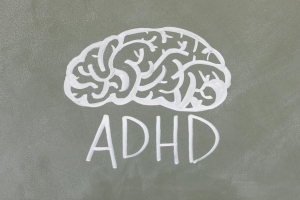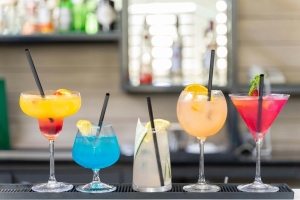cisa
Use of Stimulants in the Treatment of ADHD and the Risks of Alcohol Consumption
Stimulants include both prescribed medications and illicit drugs. They act on the central nervous system (CNS), increasing its activity by interacting with neurotransmitters such as dopamine and norepinephrine. These effects promote greater alertness, energy, and focus (1).
Prescribed stimulants, such as dextroamphetamine, methylphenidate, and lisdexamfetamine, may be indicated for the treatment of ADHD (attention-deficit/hyperactivity disorder) and narcolepsy. Although effective, they can cause various adverse effects. Among the most common are sleep problems, reduced appetite, weight loss, increased heart rate and blood pressure, irritability, mood swings, and, in more severe cases, aggression or muscle tremors (1).
Many individuals mix these substances with alcohol in an attempt to enhance euphoria or reduce the unwanted side effects of alcohol (2). However, the interaction between stimulants and alcohol can mask alcohol intoxication, leading to excessive alcohol consumption. Additionally, it amplifies cardiovascular effects, such as elevated blood pressure, increased heart rate, and a higher risk of arrhythmias and heart attacks (3).
For individuals with ADHD, studies suggest that proper treatment with prescribed stimulants can reduce the risk of alcohol and substance abuse disorders (4). This protective effect occurs because individuals with ADHD often exhibit greater impulsivity and a dysregulated reward system, characteristics that increase the likelihood of seeking immediate relief through risky behaviors, such as alcohol and drug use (5).
Although the risks associated with mixing alcohol and stimulants for ADHD treatment are already known, there is still a need for further studies to fully understand the interaction mechanisms between these substances and their long-term consequences. Future research may help clarify these effects and contribute to more effective strategies for the prevention and management of patients using these medications.
References:
- Farzam K, Faizy RM, Saadabadi A. Stimulants. [Updated 2023 Jul 2]. In: StatPearls [Internet]. Treasure Island (FL): StatPearls Publishing; 2024 Jan-. Available from: https://www.ncbi.nlm.nih.gov/books/NBK539896/
- Barrett, S. P., & Pihl, R. O. (2002). Oral methylphenidate-alcohol co-abuse. Journal of clinical psychopharmacology, 22(6), 633–634. https://doi.org/10.1097/00004714-200212000-00020
- Barkla, X. M., McArdle, P. A., & Newbury-Birch, D. (2015). Are there any potentially dangerous pharmacological effects of combining ADHD medication with alcohol and drugs of abuse? A systematic review of the literature. BMC psychiatry, 15, 270. https://doi.org/10.1186/s12888-015-0657-9
- Hammerness, P., Petty, C., Faraone, S. V., & Biederman, J. (2017). Do Stimulants Reduce the Risk for Alcohol and Substance Use in Youth With ADHD? A Secondary Analysis of a Prospective, 24-Month Open-Label Study of Osmotic-Release Methylphenidate. Journal of attention disorders, 21(1), 71–77.
- Luderer, M., Ramos Quiroga, J. A., Faraone, S. V., Zhang James, Y., & Reif, A. (2021). Alcohol use disorders and ADHD. Neuroscience and biobehavioral reviews, 128, 648–660. https://doi.org/10.1016/j.neubiorev.2021.07.010
Harmful Alcohol Consumption After the COVID Pandemic: A Problem Still Unsolved
A recent study points out that the increase in alcohol consumption observed during the COVID-19 pandemic persisted into 2022, highlighting possible long-lasting effects related to stress and behavioral changes.
Harmful alcohol consumption is one of the leading preventable causes of morbidity and mortality in the United States and many other countries. During the COVID-19 pandemic, an increase in alcohol consumption associated with stress and a rise in alcohol-related deaths were recorded. Previous studies have documented these impacts, but there was, and still is, a need to assess whether the patterns of increased consumption persisted after the pandemic. Additionally, analyzing trends among subpopulations can guide public policies and health initiatives to reduce alcohol-related morbidity and mortality.
A recent study (1), published in November 2024, aimed to determine whether the increase in alcohol consumption observed during the pandemic (2020, compared to 2018) was maintained in 2022, after the most severe pandemic period. To this end, cross-sectional data from adults (≥18 years) participating in the National Health Interview Survey (NHIS) between 2018 and 2022 were used. This nationally representative survey uses complex sampling to reflect the U.S. population—24,965 participants in 2018, 30,829 in 2020, and 26,806 in 2022. It is worth highlighting that the main outcomes evaluated were alcohol consumption in the past year and excessive consumption, defined by the National Institute on Alcohol Abuse and Alcoholism (NIAAA) as five or more drinks on a day (or ≥15 drinks per week) for men and four or more drinks on a day (or ≥8 drinks per week) for women.
The main finding of the study was that alcohol consumption increased both in 2020 and in 2022 compared to 2018. Looking at alcohol consumption in the past year, there was an increase of 2.69% in 2020 and 2.96% in 2022. For excessive consumption, there was an increase of 1.03% in 2020 and 1.18% in 2022. These increases were observed across most population groups, except among Native Americans and Asians.
The results suggest that the increase in alcohol consumption during the pandemic was not temporary, but remained high and continued to grow in 2022. This may be related, according to the study’s authors, to the prolonged stress caused by the pandemic, the persistence of changes in people’s habits, and difficulties accessing healthcare services during this period. Despite some limitations, such as the exclusion of military or institutionalized populations and potential inaccuracies in participants' responses, the data provides a clear insight into a public health issue. The study reinforces the need to closely monitor alcohol consumption patterns and their impacts.
Finally, it can be concluded that the increase in alcohol consumption during and after the COVID-19 pandemic represents a serious issue that requires attention. It is necessary to expand access to screening services to identify harmful consumption, improve psychological support within healthcare systems, and promote community actions to assist the most vulnerable individuals. These measures can help reduce the public health impacts associated with the rise in alcohol consumption since the pandemic—a still unresolved problem.
References
- Divya Ayyala-Somayajula, Jennifer L. Dodge, Adam M. Leventhal, et al. Trends in Alcohol Use After the COVID-19 Pandemic: A National Cross-Sectional Study. Ann Intern Med. [Epub 12 November 2024]. doi:10.7326/ANNALS-24-02157
Can Physical Exercise Cure Alcoholism?
December 19, 2024Can Physical Exercise Cure Alcoholism?
Physical activity has shown benefits for both physical and mental health in individuals with alcohol use problems. A study points to an increase in substances associated with pleasure and well-being, reducing the harmful effects of alcohol use.
A recent study, published in the scientific journal PLoS ONE, sought to compile the results of highly reliable clinical research that involved physical exercise interventions for patients with Alcohol Use Disorder (AUD). The authors aimed to provide stronger evidence on ways to treat alcohol dependence and the physical and mental health of this patient group.
The survey included only randomized clinical trials with patients diagnosed with AUD or post-traumatic stress disorder (PTSD) with symptoms of AUD. To be included in the survey, studies needed to compare "experimental groups" that underwent exercise interventions, with variations in type, intensity, and duration, against "control groups" that did not perform exercises.
The outcomes analyzed in the studies included the number of daily and weekly alcohol doses, questionnaires for alcohol consumption identification, aerobic capacity (VO2max), resting heart rate, symptoms of anxiety, depression, and stress, with interventions varying between aerobic exercises, resistance training, yoga, and combinations of these approaches, lasting from 3 to 24 weeks.
The survey obtained interesting results, with evidence highlighting that physical exercise had positive effects on daily alcohol consumption, with a significant reduction in the number of daily doses, but no impact on weekly consumption. There was also a significant reduction in the scores of the Alcohol Use Disorders Identification Test (AUDIT), indicating an improvement in alcohol use patterns.
Regarding physical and psychological effects, exercise increased VO2max and improved resting heart rate, as well as significantly reducing anxiety, depression, and stress levels. The subgroup analysis indicated that mixed exercises and an intervention duration of up to 12 weeks were effective in reducing anxiety.
Despite the interesting and promising results, one limitation identified was the assessment of risk of bias, as this raised concerns in 53% of the studies, particularly regarding the lack of blinding in the interventions, meaning participants and researchers knew which group they were in, which may have influenced the results.
References:
Li J, Zhou Z, Gao G, Zang L (2024) Effectiveness of exercise intervention in improving physical and mental status of patients with alcohol use disorders: A systematic review and metaanalysis. PLoS ONE 19(10): e0311166. https://doi.org/10.1371/journal.pone.0311166
Dangerous Mix: The Risks of Alcohol Use with Zolpidem
December 19, 2024Dangerous Mix: The Risks of Alcohol Use with Zolpidem
The concurrent use of alcohol and Z drugs, such as zolpidem, presents significant health risks, especially concerning effects on the central nervous system and an increase in risky behaviors.
The so-called Z drugs are a class of medications widely used for the short-term treatment of insomnia and other sleep disorders (1). This term encompasses drugs like zolpidem, zopiclone, and eszopiclone, which were developed as alternatives to benzodiazepines, offering a sedative-hypnotic effect with lower risks of dependence and side effects. They are called Z drugs because of the initial letter of their main names, making it easier to refer to the class of non-benzodiazepine hypnotics aimed at sleep.
The mechanism of action of Z drugs involves the selective stimulation of GABA-A receptors in the brain, promoting a calming and hypnotic effect. This occurs through the amplification of GABA neurotransmitter activity, which inhibits neuronal excitability and induces sleep (2). Although effective, these substances carry risks, especially when combined with others that depress the central nervous system, such as alcohol.
The concurrent use of alcohol and Z medications, like zolpidem, presents significant health risks. According to the FDA, the combined use can result in excessive sedation, coordination difficulties, and in extreme cases, complex behaviors during sleep, such as walking, driving, or performing other activities while unconscious. Additionally, there is an elevated risk of respiratory depression and other serious effects, as alcohol enhances the sedative effects of Z drugs (3).
Activities requiring full attention, such as driving, should be avoided after using these medications, and combined use with alcohol should be avoided to reduce the risks of severe adverse effects, such as sleepwalking and amnesia. People with a history of substance abuse should be evaluated with caution before prescribing these drugs (3). To minimize risks, ANVISA (Brazilian Health Regulatory Agency) has recently changed the prescription requirements for zolpidem and other Z drugs, making it stricter due to the risk of dependence and abuse associated with these substances (4). Thus, it is essential that the use of these medications be strictly controlled, with restrictions on their short-term use, continuous medical supervision, and guidance on the risks of concurrent alcohol use.
References:
- FDA Label for Ambien®. Drugs@FDA. https://www.accessdata.fda.gov/drugsatfda_docs/label/2008/019908s027lbl.pdf
- Neumann, E., Rudolph, U., Knutson, D. E., Li, G., Cook, J. M., Hentschke, H., Antkowiak, B., & Drexler, B. (2019). Zolpidem Activation of Alpha 1-Containing GABAA Receptors Selectively Inhibits High Frequency Action Potential Firing of Cortical Neurons. Frontiers in pharmacology, 9, 1523. https://doi.org/10.3389/fphar.2018.01523
- Taking Z-drugs for Insomnia? Know the Risks. U.S. Food and Drug Administration. September 9, 2020. https://www.fda.gov/consumers/consumer-updates/taking-z-drugs-insomnia-know-risks
- Agência Nacional de Vigilância Sanitária. (2024, 17 de abril). Medicamento zolpidem terá alteração no tipo de receita para prescrição e venda.
New Fiocruz Study Analyzes the Cost of Alcohol Consumption in Brazil
November 22, 2024New Fiocruz Study Analyzes the Cost of Alcohol Consumption in Brazil
A new study reveals that alcohol consumption in Brazil generates up to R$18.8 billion in annual costs, highlighting the urgency for preventive policies.
The study (1), conducted by the Oswaldo Cruz Foundation (Fiocruz), aimed to estimate the economic costs of alcohol consumption in Brazil, addressing both direct and indirect costs to society. Using public health data and scientific literature, the research estimated the financial impacts of alcohol consumption in the country in 2019.
The key findings indicated that the total costs attributable to alcohol consumption ranged from R$10.1 billion to R$18.8 billion. These costs were divided into direct costs, such as hospitalizations and outpatient procedures, which ranged from R$483 million to R$1.1 billion, and indirect costs, estimated between R$9.7 billion and R$17.7 billion, which include lost productivity due to absenteeism, premature deaths, and social security expenditures. Additionally, alcohol-attributable deaths were estimated to range from 47,900 to 104,800 in the year.
Another key point in the analysis is the increasing prevalence of alcohol consumption among Brazilians, with a sharp rise among women and an early onset during adolescence, leading to a significant burden of disease and death. Cardiovascular diseases, cancers, and alcohol-related accidents are some of the leading causes of hospitalizations and alcohol-attributable deaths. To support these points, the study uses data from the 2019 PNS (National Health Survey), Vigitel, Datasus, and the World Health Organization (WHO). It is important to highlight that these data on the increasing alcohol consumption over the years are significant, even though this study focused only on 2019. Thus, the cost analysis is framed under the perspective that such expenditures are likely to continue to rise.
The study presents several limitations related to the statistical model used, but these limitations, given the available data, incorporate the best evidence and approximations to adjust the analysis to the Brazilian population. Another point is that the morbidity and mortality data were obtained from Datasus, the Ministry of Health database, which may underestimate the actual scale of alcohol-related problems, especially in cases where alcohol may not be recorded as the direct cause of hospitalization. In terms of costs, the direct cost of primary health care and family expenses could not be estimated, and the indirect cost of variables such as "presenteeism" was also not included. Despite these limitations, it should be emphasized that the analysis is robust and supported by scientific literature.
In summary, the findings highlight a significant economic and social burden from alcohol consumption in Brazil, suggesting the need for public policies to control harmful use, such as those presented by the WHO in 2018 through the SAFER initiative.
References:
- Nilson, E. Estimação dos custos diretos e indiretos atribuíveis ao consumo de álcool no Brasil. Fiocruz, 2024.
The Shame of Sobriety: Sober Shaming and Its Impact on Mental Health
November 22, 2024The Shame of Sobriety: Sober Shaming and Its Impact on Mental Health
Drinking alcohol is undoubtedly an important part of Western culture, commonly used for celebrating, comforting, socializing, relaxing, and even coping with problems. However, its harmful use is associated with various diseases and health issues, being responsible for the deaths of thousands of people each year.
Although abusive alcohol consumption is still prevalent in Brazil, data shows that the country is following the global trend of a decline in alcohol consumption among young people. This means that more individuals are reconsidering their relationship with alcohol and deciding to reduce or stop drinking. However, for many of them, this decision has not been well received by those around them.
Sober Shaming — the act of shaming or embarrassing someone for deciding not to drink—is a concept that emerged around 2021 through a campaign by the UK-based NGO Alcohol Change UK, and has gained traction in recent years, reinforced by the global trend of reduced alcohol consumption among the younger generation.
Sober shaming can occur subtly when someone asks, "Why aren't you drinking?" or more directly when a person is accused of being "boring" for not drinking, for example. The mere fact of having to justify why one doesn't want to drink is already an example of this social pressure. This can lead people to completely avoid situations involving alcohol or withdraw to prevent negative social consequences (1).
Alcohol is the most commonly used social lubricant. It lowers defenses, makes barriers more porous, and filters more transparent. For this reason, in many cultures, alcohol has become synonymous with fun, and reducing consumption is often associated with boredom and frustration. In this way, sober shaming is part of the persistent belief that it is impossible to have fun without alcohol.
Drinkers may also feel criticized when someone decides to stop or moderate their drinking. A study (2) showed that alcohol drinkers feel judged about their consumption by non-drinkers. As a result, non-drinkers can be seen as a threat during social events.
However, there is a difference in the pressure that men and women face regarding alcohol consumption. Literature findings show that men face more pressure to drink than women, and for women, it is easier to find socially accepted reasons to not drink or to moderate their consumption (3). For men, alcohol consumption is often associated with masculine traits. Drinking large amounts while maintaining self-control is seen as a sign of virility. On the other hand, for women, excessive drinking can be culturally viewed as shameful or immoral, which reduces the pressure to consume.
The stigmatization of sobriety can manifest itself in various ways, such as associating abstinent individuals with negative traits ("boring," "square," "weak") or creating fear of social consequences (for example, not being invited to certain events). In the worst cases, a non-drinker may even be excluded from their social circle (1).
People may not be aware that they are practicing sober shaming, and many do not do it intentionally, seeing it as a joke. However, this behavior can still be very harmful—especially in combination with all the messages that suggest drinking is "normal" and not drinking is not.
By practicing sober shaming, we are telling people that their decision to not drink is not valid, contributing to a culture that isolates and marginalizes those who abstain from alcohol. This practice can have a negative impact on the mental and emotional health of individuals. Instead, we can show respect and support for those who have made this decision. Ending sober shaming can contribute to more people making healthy choices.
References:
- Bayoumy AB, Van de Grift A. Haal alcoholonthouding uit de taboesfeer [Break the taboos on alcohol abstinence: is it time for the #StopSoberShaming initiative in the Netherlands?]. Ned Tijdschr Geneeskd. 2023 May 23;167:D7484. Dutch. PMID: 37257118
- Emslie C, Hunt K, Lyons A. Mais velho e mais sábio? Relatos de homens e mulheres sobre o consumo de álcool no início da meia-idade. Illn de Saúde Social. 2012;34:481-96. doi:10.1111/j.1467-9566.2011.01424.x . Medline
- Paton-Simpson G. Beber socialmente obrigatório: uma análise sociológica das normas que regem os níveis mínimos de consumo. Problema de drogas contemporâneas. 2001;28:133-77. doi:10.1177/009145090102800105.
Do Smart People Drink More Alcohol?
November 22, 2024Do Smart People Drink More Alcohol?
A new study analyzes the relationship between intelligence in adolescence, measured through IQ tests, and alcohol consumption in adulthood. People with higher IQs were found to have higher chances of drinking alcohol, but reported fewer episodes of abusive drinking.
A study published in 2024 (1) analyzed data from 6,300 American men and women who participated in a longitudinal project that began in 1957 (the "Wisconsin Longitudinal Study"), when the participants were around 18 years old. In 2004, 47 years after graduating from high school, the participants were asked about their alcohol consumption patterns. Specifically, they were asked how many alcoholic drinks they had consumed in the last 30 days and the frequency of binge drinking during that period.
Among various sociodemographic factors of these participants, the authors focused on education level and income, aiming to analyze whether these factors influenced the relationship between IQ in adolescence and alcohol consumption in adulthood.
The results were quite intriguing and sparked significant interest in the international media. The authors found that for each point increase in IQ, there was a 1.6% increase in reports of moderate or heavy alcohol consumption. However, among those who drank alcohol, having a higher IQ was associated with fewer reports of binge drinking. As noted by the authors, these results are influenced by many variables, and studies in other countries, such as Sweden and Denmark, have shown that higher IQ scores were associated with greater chances of abstinence (2).
One factor that influenced the relationship between IQ and alcohol consumption was the participants' income, as people with higher incomes were more likely to consume alcohol and, among those who drank, had a lower likelihood of engaging in abusive drinking. This income variable considered the participants' parents' income, given that the study began when they were at the end of their adolescence. The authors point out that this result suggests that children and teenagers who grow up in financially stable environments may have lower chances of abusive drinking in adulthood.
Although enlightening, this study has important limitations. In terms of the analyzed population, 99% of participants reported being white and born in 1939. The lack of diversity in the population makes it difficult to generalize these results. Therefore, since alcohol consumption is influenced by cultural variables, comparisons with Brazil should be made with caution. In general, this study highlights the importance of adolescence in the development of emotional and cognitive factors that can affect alcohol consumption in adulthood.
References:
1 - Druffner, N., Egan, D., Ramamurthy, S., O’Brien, J., Davis, A. F., Jack, J., ... & Brown, E. S. (2024). IQ in high school as a predictor of midlife alcohol drinking patterns. Alcohol and alcoholism, 59(4), agae035.
2 - Just-Østergaard E, Flensborg-Madsen T, Knop J, Sørensen HJ, Becker U, Mortensen EL. Intelligence in young adulthood and alcohol use disorders in a prospective cohort study of Danish men: the role of psychiatric disorders and parental psychiatric history. BMJ Open. 2019 Sep 4;9(9):e028997. doi: 10.1136/bmjopen-2019-028997. PMID: 31488478; PMCID: PMC6731796.
Brief Intervention to Reduce Risky Alcohol Consumption Has Proven Effective in the Elderly
November 22, 2024Brief Intervention to Reduce Risky Alcohol Consumption Has Proven Effective in the Elderly
A study conducted by researchers from the University of São Paulo (USP) in Ribeirão Preto observed a reduction in risky alcohol consumption among the elderly through a brief intervention protocol.
Harmful alcohol use among the elderly population leads to serious health complications and can even result in death. It is known that alcohol is the 7th largest risk factor for the total disease burden among individuals aged 50 to 69 years and the 10th for those over 70 years old (1).
According to the WHO (World Health Organization), brief intervention (BI) is one of the most cost-effective measures for treating harmful alcohol use (2). This therapeutic approach, widely used in the treatment of alcoholism, can also be applied to other mental health disorders. It consists of a set of practices aimed at identifying a real or potential problem related to alcohol use and motivating the person to take action about it.
Recently, researchers from the University of São Paulo (USP) in Ribeirão Preto assessed the effectiveness of brief intervention in reducing risky alcohol consumption among elderly individuals attended to in Primary Health Care (3). The study, conducted in the city of Ribeirão Preto, in Brazil, involved individuals aged 60 or older who reported alcohol use and scored between ≥ 5 and ≤ 19 on the AUDIT (Alcohol Use Disorders Identification Test) scale. Most participants were male, married, with a family income between 1 and 3 minimum wages, and some were retired, with 1 to 4 years of schooling.
According to the author of the research, the characteristics of BI for the elderly may include providing information about health behaviors and the risks associated with their level of consumption; interpreting screening results and discussing reasons for drinking and its potential consequences; understanding their support networks; and negotiating a plan for reducing alcohol consumption.
Sociodemographic results of the research showed that 46.5% (n=234) of participants had low-risk alcohol consumption; 44.5% (n=224) had risky drinking patterns, and 9.1% (n=46) were potential dependents. For individuals who displayed risky drinking patterns, the study evaluated the brief intervention protocol, analyzing alcohol consumption patterns, the amount of drinks, frequency, and binge drinking behavior in these individuals before and after they were subjected to the intervention or the delivery of informational pamphlets (control group).
As the main outcome, the study showed a significant reduction in alcohol consumption patterns in the group that underwent the brief intervention over time (between 3 to 6 months). Additionally, a decrease in habitual consumption and binge drinking behavior was observed. Therefore, the study concludes with the recommendation of the brief intervention protocol for elderly individuals with risky alcohol consumption who are assisted by Primary Health Care.
Alcohol is one of the leading risk factors for the global disease burden in people aged 50 and older, and the consequences of harmful alcohol use during this stage include cognitive and intellectual functioning deficits, as well as the recurrence of other age-related health issues. For this reason, care by healthcare professionals tailored to this population is essential to understand this behavior and its consequences, so that proper guidance and treatment can be developed for the best care of the elderly's health.
To discuss more about this research and the impact of the brief intervention protocol for elderly individuals with risky alcohol consumption, CISA spoke with Deivson Wendell da Costa Lima, the principal investigator of the study. Here’s what he had to say:
- What are the main advantages of brief intervention (BI) for elderly individuals with risky alcohol consumption? Was any specificity identified both regarding the risky use and the application of the protocol for this age group?
The implementation of BI for the elderly was strategic within the context of Primary Health Care (PHC) as it emphasized a preventive action in the community, addressed different health problems and interactions with medications that could be related to alcohol use, evaluated the elderly’s motivation to change their alcohol consumption, and helped understand the need to reduce consumption from risky levels to low risk or no consumption. It also involved working with Community Health Agents (ACS), who contributed to the development of the protocol.
The brief intervention took place through a scheduled home visit by a single researcher with a nursing background, conducted individually, face-to-face, in a location chosen by the elderly person within their home.
The home visit proved to be an appropriate tool for addressing alcohol consumption and preventing alcohol-related risks in the elderly’s home environment, as it made early intervention easier and provided insight into their health conditions and family and social dynamics.
Our brief intervention was carried out by a researcher with a nursing degree, specialized in mental health, and trained in alcohol and drug research. This researcher was the sole person who led the brief intervention protocol, following the guidelines for each phase. Studies show that elderly individuals assisted by nurses in PHC settings, who receive brief interventions, are less likely to engage in risky drinking than those who do not receive this approach.
Shorter questions regarding health conditions and then about alcohol consumption were part of the initial interview approach and served as an alternative for the elderly to feel more comfortable discussing their relationship with alcohol consumption.
The session lasted an average of 30 minutes, which seems to be more acceptable for the target population. Researchers have shown that shorter counseling sessions tend to have a greater additional effect on brief interventions for reducing alcohol consumption.
Our brief intervention protocol involved motivational interviewing techniques based on Cognitive Behavioral Theory, which facilitated discussions about risky drinking. Researchers agree that this engagement can help reduce complications arising from alcohol’s interaction with medications, mitigate health problems exacerbated by alcohol consumption, and improve quality of life.
The mere fact that the elderly person agreed to participate in the brief intervention may have been the start of a positive behavior change process regarding alcohol consumption. Elderly individuals seem more willing to engage in research than the general population and are more likely to participate in follow-up protocols compared to younger populations.
Each phase of our brief intervention protocol provided age-appropriate care with specific guidance, questions, and complexities unique to people aged 60 and older. It’s worth noting that there was not just one key element of the protocol, but several interconnected factors. More research is needed to understand the most effective components of brief alcohol interventions for the elderly.
- What were the main challenges encountered in applying the screening protocol and BI in the units studied?
Alcohol consumption is often a behavior that health professionals rarely question, and as a result, drinking patterns are not assessed. The risks associated with alcohol consumption are often discovered only when elderly individuals seek consultations for other health issues.
Elderly individuals are less likely to access or seek help, either from PHC or specialized care, for alcohol-related problems. They often have difficulty recognizing the health risks of alcohol consumption, and may attribute symptoms related to this psychoactive substance to other comorbidities or aging-related complaints, rather than to alcohol itself.
Healthcare professionals lack training in screening tools and in strategies for appropriate interventions for elderly individuals, whether in-person or online. They also need more time to address the alcohol-related needs of the elderly.
Other challenges in this study include an emphasis on self-reported data regarding alcohol consumption history. There is a likelihood of underreporting when elderly individuals are asked to recall their drinking habits. Responses may only reflect socially acceptable behaviors, without revealing the full extent of their issues. In general, emotional state and memory problems can also impact elderly individuals' ability to provide accurate reports.
- In your opinion, would it be important to expand this screening protocol and brief intervention to other locations and age groups? What challenges would need to be overcome for this to advance in our country?
The steps prior to the brief intervention—pre-screening and screening—were necessary to raise awareness among ACS workers and nurses about participating in our research. The pre-screening was done using a single question about alcohol consumption, already included in the elderly person’s individual record used by ACS workers in Family Health Units. This screening was brief and easy to administer. The responses from the elderly contributed to updating their records and identifying those classified as having risky drinking patterns.
The pre-screening strategy allowed data collection from the entire eligible population. A positive aspect of this strategy was that it avoided sample selection bias, such as only recruiting elderly individuals who consumed large quantities of alcohol more frequently.
Another option for the pre-screening process could be the use of the AUDIT-C in future research and clinical practice. In the context of Primary Health Care, the initial alcohol consumption assessment through AUDIT-C could be incorporated into the individual registration forms used by ACS workers, as well as during routine consultations with nurses and other health professionals. After evaluating the responses, elderly individuals who score ≥ 4 on the AUDIT-C could then receive the full AUDIT to determine their level of risk and any signs of possible dependence.
References:
- Murray CJL, Aravkin AY, Zheng P, Abbafati C, Abbas KM, Abbasi-Kangevari M, et al. Global burden of 87 risk factors in 204 countries and territories, 1990–2019: a systematic analysis for the Global Burden of Disease Study 2019. The Lancet. 2020 Oct;396(10258):1223–49.
- WHO. SAFER - Brief interventions and treatment [Internet]. www.who.int. Available from: https://www.who.int/initiatives/SAFER/brief-interventions-and-treatment
- Lima DW da C. Efetividade da intervenção breve para redução do consumo de risco de álcool em idosos na atenção primária à saúde [Internet]. www.teses.usp.br. 2023 [cited 2023 Nov 23]. Available from: https://www.teses.usp.br/teses/disponiveis/22/22131/tde-09082023-164723/en.php
The Challenges of Changing a Country’s Alcohol Consumption Culture: The Case of Finland
October 29, 2024
The Challenges of Changing a Country’s Alcohol Consumption Culture: The Case of Finland
A Finnish study shows how abusive alcohol use remains high in the country despite an average decline in consumption, highlighting the challenges of transforming a culture of alcohol consumption.
It is known that some patterns of alcohol consumption are more harmful than others. Abusive consumption, or binge drinking, characterized by a focus on intoxication, is associated with over 200 types of diseases, while moderate consumption, especially with meals, presents a significantly lower risk of problems. Some countries, like those with Mediterranean cultures, are characterized by a high prevalence of daily alcohol consumption (which reflects a high per capita consumption rate, calculated as the average total consumption of people aged 15 and older), primarily to accompany meals (for example, Spain, Italy, Portugal), but have relatively low levels of binge drinking. This means that in these countries, alcohol is consumed frequently but in small amounts, which is considered less harmful. In contrast, other countries, like Romania, exhibit low frequency of consumption but a high prevalence of abusive use (1). Since patterns of use are intrinsically linked to a country’s culture, it is important to closely observe the consumption habits of the population.
Changes in a society's alcohol consumption can have various causes, stemming from broader social, cultural, and economic changes or from specific normative or policy changes related to alcohol. These changes can materialize in new drinking groups, new consumption situations, or altered consumption patterns. These aspects need to be examined to understand the dynamics of changes in alcohol consumption and the implications they may have for the future.
One study (2) examined changes in alcohol consumption in Finland between 2000 and 2016, analyzing alterations by age group, gender, and consumption level. The aim was to understand how alcohol consumption is distributed in the population and how, over time, consumption patterns change. Specifically, the study sought to understand if changes in the overall level of consumption (per capita consumption) affect its distribution—that is, whether light, moderate, and heavy consumption change equally or whether the shape of the alcohol consumption distribution remains unchanged. Additionally, the study aimed to investigate whether there was evidence of a shift toward a more Mediterranean style of consumption when per capita consumption decreased in the country—specifically, whether consumption became more distributed, with alcohol consumption occurring on more occasions but with less alcohol per occasion. The main data source was the Finnish Drinking Habits Survey (FDHS) conducted in 2000, 2008, and 2016. Participants constituted a random sample of Finnish residents aged 15 to 69.
The results showed that the increase in per capita consumption in the early 2000s was driven by an increase in consumption frequency among older adults and a rise in binge drinking episodes among women. During this period, the older population approached the younger one in terms of both consumption frequency and binge drinking levels.
After 2008, there was a reduction in per capita consumption, accompanied by a decrease in regular consumption frequency and binge drinking, especially among men and youth. This change in patterns was accompanied by reduced mortality rates, with deaths due to alcohol-related injuries as a contributing cause decreasing from nearly 1,000 in 2006 to about 550 in 2015 (according to Statistics Finland). Other factors may be at play; for example, improved treatment for alcoholism or safer roads, but according to the study’s authors, the reduction in binge drinking likely contributed significantly to this positive outcome.
Many political actors desire to change the culture of alcohol consumption to reduce intoxication problems and create a “temperance” or “moderation” culture. In Finland, however, there is no evidence that the reduction in binge drinking occurred due to this shift in consumption style. The present study also showed that the maximum amounts consumed in a day by Finnish men are still very high, and abusive use remains a problem to be addressed. Furthermore, although the most significant reduction in binge drinking was observed among young men, the results indicated that this pattern continues to be more prevalent in this group. Thus, while the decrease in consumption has yielded good public health outcomes, the authors conclude that much remains to be done, and public policies are needed to combat excessive alcohol consumption in Finland.
Brazil has also observed a reduction in per capita alcohol consumption over the past decade, but unlike Finland, there has not been a corresponding decrease in abusive use, nor solid evidence of changes in the population’s consumption patterns toward a more moderate style. This prompts reflection on the importance and challenges of promoting a less harmful consumption culture that contributes to reducing abuse, as well as the need for specific public policies to address this issue.
References:
- Eurostat. (n.d.). Alcohol consumption statistics.https://ec.europa.eu/eurostat/statistics-explained/index.php/Alcohol_consumption_statistics(accessed October 17, 2024).
- Mäkelä, P., & Härkönen, J. (2021). When tides turn: How does drinking change when per capita alcohol consumption drops? Addiction Research & Theory, 29(7-8), 567-575.
Mixing Caffeine and Alcohol: What Are the Risks and How to Protect Yourself?
The combination of caffeine and alcohol has become more common, especially with the consumption of alcoholic energy drinks. While both substances are regularly consumed by many people, combining them can pose serious health risks. It is crucial to understand these dangers and the necessary precautions when consuming these substances together (1).
Caffeine is a stimulant that can mask the depressant effects of alcohol, creating a sense of alertness and a lower perception of intoxication. This increases the risk of excessive alcohol consumption, as individuals may continue drinking without feeling completely drunk (1). Additionally, this combination raises the likelihood of risky behaviors, such as driving under the influence of alcohol or engaging in binge drinking episodes (2).
The combined consumption of caffeine and alcohol has also been associated with a higher risk of arrhythmias, according to studies with animal models, especially when high doses of both substances are consumed (3). The health effects can be severe, particularly on the cardiovascular system. Caffeine raises blood pressure and heart rate, while alcohol acts as a depressant on the nervous system. When combined, these effects can lead to cardiovascular stress, increasing the risk of cardiac arrhythmias and other issues (2,3). Furthermore, this combination can lead to dehydration and, in extreme cases, alcohol poisoning, as the effects of alcohol are underestimated (4).
Adolescents and young adults are particularly vulnerable, as early caffeine consumption has been linked to an earlier onset of alcohol use, creating a consumption cycle that can heighten health risks (4).
Given the potential risks, it is advisable to avoid mixing caffeine and alcohol or, at the very least, to moderate the consumption of both substances. If energy drinks or other caffeinated beverages are consumed alongside alcohol, it is essential to monitor the amount ingested to avoid excessive consumption. Individuals with pre-existing heart conditions or those more prone to anxiety should be particularly cautious, as caffeine can exacerbate these symptoms (5).
The combination of caffeine and alcohol represents a dangerous practice that can increase alcohol consumption, impair judgment, and lead to serious health consequences. More research is needed to fully understand the long-term impacts of this combination on the body. However, to reduce these risks, it is essential to be aware of the effects of caffeine on alcohol consumption and to adopt preventive measures.
References:
- Marczinski, C. A., Fillmore, M. T., Stamates, A. L., & Maloney, S. F. (2016). The desire to drink alcohol is enhanced with high caffeine energy drink mixers. Alcohol Clin Exp Res, 40(9), 1982–1990. https://doi.org/10.1111/acer.13152
- Haun, H. L., Olsen, A. C. K., Koch, K. E., Luderman, L. N., May, C. E., & Griffin, W. C. (2021). Effect of caffeine on alcohol drinking in mice. Alcohol, 94, 1-8. https://doi.org/10.1016/j.alcohol.2021.03.005
- Griffin, W. C., May, C. E., Haun, H. L., & Myers, R. D. (2021). Alcohol and caffeine synergistically induce spontaneous ventricular tachyarrhythmias: Ameliorated with dantrolene treatment. Experimental and Clinical Cardiology, 94, 1-12. https://doi.org/10.1016/j.expcard.2021.05.001
- Hébert-Losier, K., et al. (2018). Caffeine consumption and onset of alcohol use among early adolescents. Journal of Adolescent Health, 63(5), 587-594. https://doi.org/10.1016/j.jadohealth.2018.06.008
5.Myslínskij, V. et al. (2021). Why are caffeinated alcoholic beverages especially risky? Journal of Addiction Research, 34(2), 77-88. https://doi.org/10.1016/j.addres.2021.02.003











